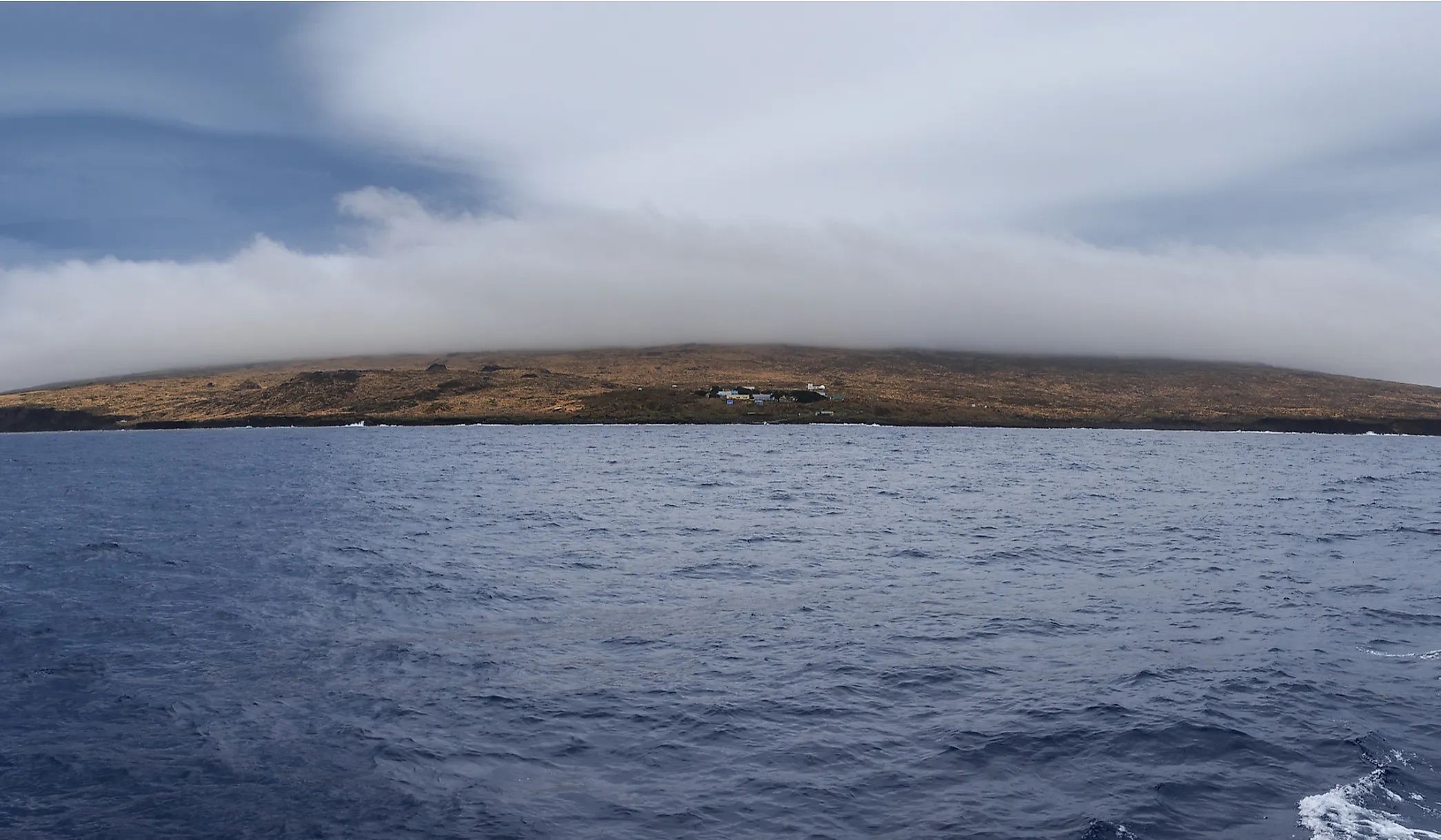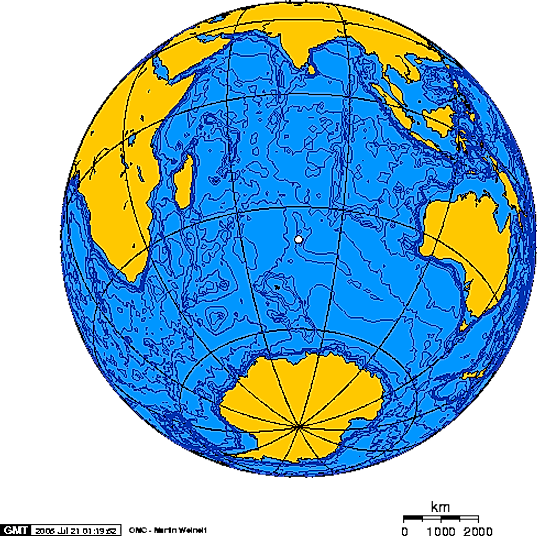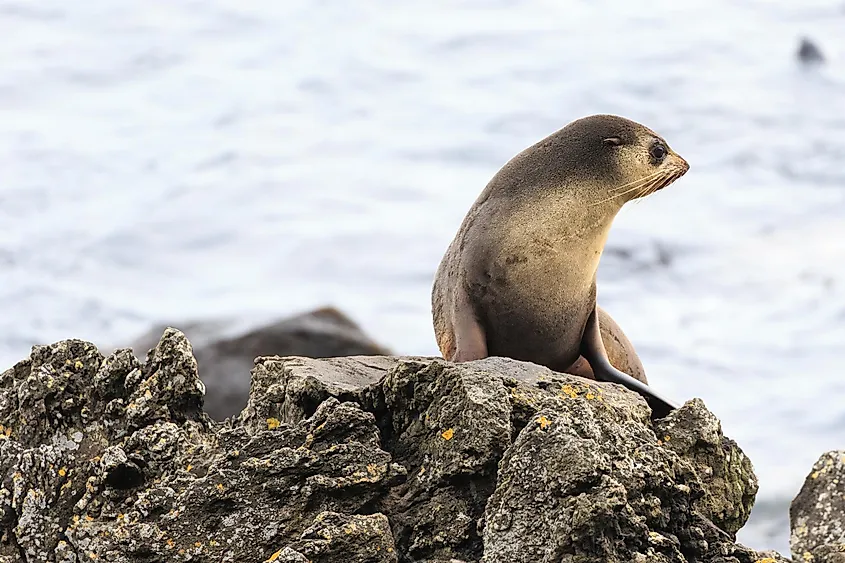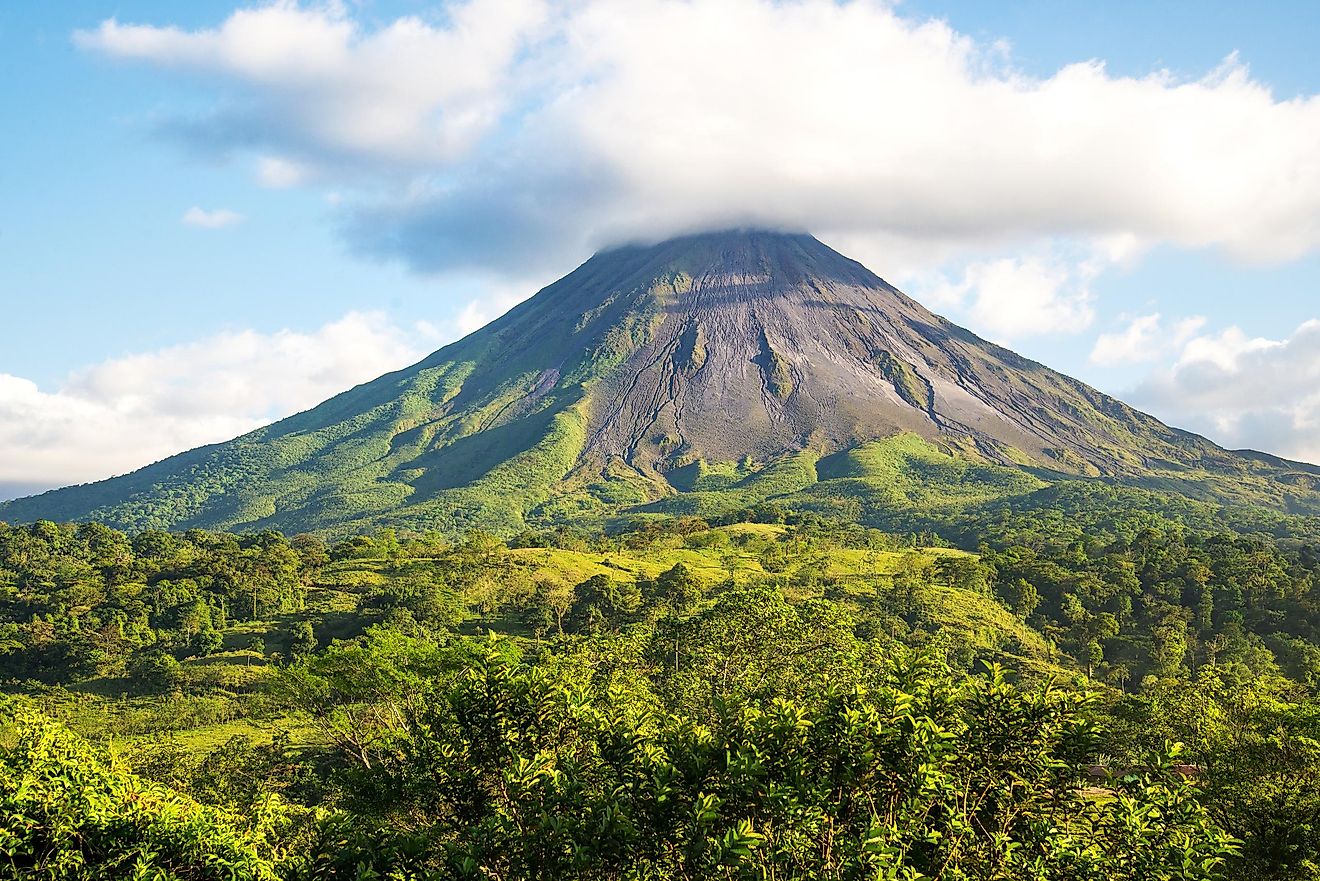
Amsterdam Island
Referred to as Nouvelle Amsterdam or Île Amsterdam, Amsterdam Island is a small French island territory that is situated in the southern Indian Ocean. Along with the neighboring Île Saint-Paul, Amsterdam Island is administered under the French Southern and Antarctic Territories.
Amsterdam Island is located roughly midway between Australia, Antarctica, Madagascar, the Australian external territory of Cocos (Keeling) Islands, and British Indian Ocean Territory. Amsterdam Island is approximately 3,200 km away from each of these territories.
Geography

The roughly elliptical-shaped volcanic Amsterdam Island covers an area of about 55 km2 and has a length of 10 km and a maximum width of 7 km. The island consists of a potentially active stratovolcano, although there are no historical records of volcanic eruptions on the island. The higher central portion of the island, which is known as Plateau des Tourbiéres, rises to an elevation of more than 500 m and features numerous peaks and a caldera. The island’s highest point, Mont de la Dives, is located here, which rises to an elevation of 867 m. The western coastline of the island features several higher cliffs that rise more than 700m and are named Falaises d’Entrecasteaux.
According to the Köppen climate classification, Amsterdam Island experiences a mild oceanic climate. The island faces a mean annual temperature of about 14 °C and an annual rainfall of 1,100 mm. Strong westerly winds continuously blow over the island.
Wildlife

Amsterdam Island supported a rich indigenous terrestrial ecosystem due to its isolation and unique biogeographic location. However, the ecosystem was drastically modified after the arrival of humans on the island. It has been estimated that currently only a few fragments of Island Cap myrtle trees are found on Amsterdam Island, but they were likely much more common before the island was cleared in 1825.
The Amsterdam albatross (Diomedea amsterdamensis) is an endemic bird that breeds only in the Plateau des Tourbiéres of Amsterdam Island. Some rare birds that are found on the island include the Antarctic tern, brown skua, and western rockhopper penguin. Small birds like the common waxbill have been introduced on the island. However, some avian species like the endemic Amsterdam duck and seabird populations (petrels) have become extinct. The Falaises d’Entrecasteaux hosts a breeding population of Indian Yellow-nosed albatross birds. Along with the Plateau des Tourbiéres, the Falaises d’Entrecasteaux has been designated an Important Bird Area by BirdLife International.
There is currently no native terrestrial fauna on Amsterdam Island. Some mammals like the brown rat and house mouse have been introduced on the island. Feral cats, southern elephant seals, and subantarctic fur seals have also been observed on the island. From 1871 to 2010, the island played host to the Amsterdam Island cattle, a rare feral cattle population. The cattle caused serious damage to the island’s ecosystem and were therefore completely slaughtered by 2010.
Brief History
The Amsterdam Island was first sighted on March 18, 1522, by the Spanish explorer Juan Sebastián de Elcano who was one of the crew members of Ferdinand Magellan’s circumnavigation tour. The island was named Nieuw Amsterdam by the Dutch explorer Anthonie van Diemen who sighted the island on June 17, 1633. However, it was the Dutch explorer Willem de Vlamingh who first landed on the island in December 1696.
In June 1843, both Île Amsterdam and Île Saint-Paul were annexed by France. In 1871, an attempt was made by Heurtin, who was a resident of the French Réunion Island, to settle on the Amsterdam Island. For the next seven months, they attempted to cultivate crops and raise cattle on the island. However, this settlement was soon abandoned and the cattle were left behind on the island. From 1924 to 1955, both the islands were administered under the French colony of Madagascar, until the formation of the French Southern and Antarctic Territories. In 1949, a French administrative and research station then called Camp Heurtin (currently, renamed as Martin-de-Viviés) was established. It functions as the island’s only settlement and seasonally hosts approximately 30 researchers, who conduct research on various aspects of Amsterdam Island.











